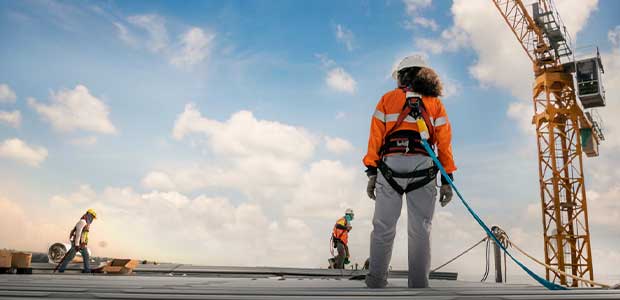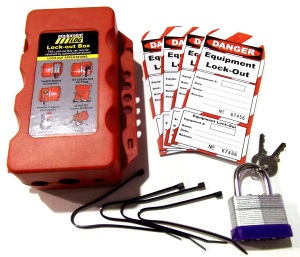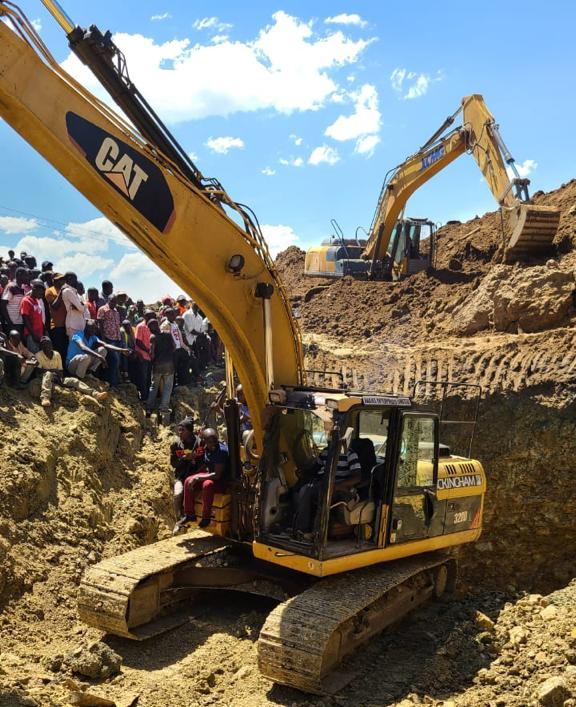Fall Rescue Plans - What to Include and How to Respond in an Emergency.

A fall incident can be a confusing and frightening event on a job site, so it is wise to have a rescue response plan carefully constructed in a clearheaded moment beforehand.
Fatalities caused by falls continue to be a leading cause of death for construction employees. Preventing falls is always best, of course, and having fall protection in place is an excellent preventative measure, but it is not enough—just as installing a smoke detector isn’t enough to prepare your team in case of fire.
You need a plan of action for your crews to follow in the event of a fall. Creating a thorough fall rescue plan arms your workers with the knowledge and processes they need to follow in an emergency to prevent serious injury or death.
The Importance of a Swift Rescue Response
In the event of a fall, even after the fall is arrested, the worker is not yet out of danger. A rapid rescue is essential for preventing secondary injuries, and even death, that can occur in a fall incident, even after the danger of a direct falling injury has passed.
Fall protection harnesses are designed to arrest a fall but not for prolonged suspension. The straps and buckles that absorb the force of a fall can begin to cut off blood circulation if the worker remains suspended for more than a few minutes. While the worker remains suspended in a fall protection harness, his or her circulation is restricted, which can lead to a condition known as suspension trauma.
Suspension trauma, also called orthostatic intolerance or harness hang syndrome, is caused by the disruption of blood flow. The loss of circulation can lead to nausea, a drop in blood pressure, loss of consciousness and the onset of circulatory shock. Uncirculated blood that pools in the legs lacks oxygen from the lungs, which raises the acidity of the blood. This acidic blood can shock the liver, kidneys and heart once circulation is restored.
OSHA requires fall protection plans to include plans for a prompt rescue due to the risk of suspension trauma. In a technical bulletin, OSHA states suspension trauma can be fatal within 30 minutes and that dangerous effects of suspension trauma can occur within as little as three to five minutes of the fall. When it comes to fall rescue, speed is of the essence. Calling the local fire department and waiting for rescue to arrive is not a good option. Having a carefully thought-out rescue plan can save precious minutes, which can translate to saving lives.
Components of a Rescue Plan
Your rescue plan should include all the information your team would need to access immediately in the event of a fall.
The first element to include in your fall rescue plan is a list of the names and contact information of authorized rescuers and first-aid trained employees. These will be the people called upon to respond to a fall incident to execute a swift rescue and, if necessary, tend to the fall victim. Only trained personnel should attempt a rescue retrieval in dangerous circumstances or provide first aid, so having a readily accessible list of employees qualified to help is key to providing timely rescue.
Next, provide employees with a complete on-site fall response checklist. Clearly and methodically think through the steps employees should follow in an emergency beforehand to provide your team with a simple checklist. This checklist will prompt any employee, regardless of their experience level or training, to run through the basic responses to a fall without forgetting an important step in the heat of the moment. Items to include on the checklist might include questions or prompts such as:
- “Can the victim be pulled to safety to avoid hanging suspended?”
- “Is the worker’s harness equipped with trauma straps or attached to a self-retracting lifeline (SRL)?” *“Do rescuers have access to a rescue ladder or lift?”
- “Have emergency services been called?”
Next, your rescue plan should include the location of all pertinent emergency supplies. This should include the location of rescue equipment (detailed below), first aid kits, defibrillators and telephones to call for help. Although the location of these items can seem obvious in the abstract, an accident can create confusion or even panic in the moment. Again, seconds matter when responding to a fall, so spelling out the location of these important items can save precious time.
You should also include a list of emergency phone numbers that should be used in the event of an incident, including the supervisors or safety managers who should be notified, the nearest medical facilities, emergency services (9-1-1 and local police and fire departments) and OSHA.
Your plan should also provide guidance on how to assess the situation once the fallen worker and all rescuers are returned to safe ground. If the victim may have sustained an internal injury, lost consciousness at any time during the incident, or remained suspended for more than a few minutes, they should be taken to the nearest hospital or medical facility for evaluation.
Rescue Equipment
Depending on the situation, you might employ one or more types of rescue equipment to help a fallen worker in suspension.
Trauma straps. Trauma straps are emergency PPE coiled into pouches attached to a harness at the hips. When hanging suspended and awaiting rescue, a fallen worker can deploy the trauma straps by uncoiling them, hooking them together, and standing on them like a bridge until help arrives. This engages the worker’s leg muscles to encourage more normal blood flow and takes the weight off the harness that could otherwise cut off circulation.
Self-rescue ladders. A self-rescue ladder is portable rope or nylon ladder housed in a pouch that attaches to an anchor point and to the worker’s harness. If equipped in advance, a self-rescue ladder deploys automatically during a fall, allowing the victim to simply climb the ladder to safety. Even if not equipped in advance, a rescue ladder can be deployed from the original anchor point or a temporary anchor point within reach.
Rescue harnesses. Rescue harnesses include handles on the shoulders that allow nearby workers to hoist a fallen worker back onto safe footing. This should only be attempted for short fall distances where workers can safely reach the victim without putting themselves at risk of falling as well.
Recovery SRLs. Self-retracting lifelines (SRLs) are best known as personal fall protection devices that serve a similar function to shock-absorbing lanyards. Recovery SRLs allow a rescuer to hoist a fall victim to safety with the help of an inbuilt winch mechanism.
Aerial work platforms. A personnel lift such as a bucket truck, boom lift or scissor lift can be used to retrieve a fallen worker if one is available on site and can safely reach the fallen worker’s height. Only use personnel lifts or rescue baskets intended to hold workers aloft; do not attempt to rescue workers using other construction equipment or vehicles.
Reporting an Incident to OSHA
Any fall should be treated as a serious safety incident, even if no injuries occurred. Any fall incident that results in a worker losing consciousness, requiring medical treatment beyond first aid, or missing work (including restrictions on their ability to work) is considered a recordable incident, according to OSHA. You must report these incidents to OSHA by law. You can use the follow forms to report a fall incident to OSHA:
- OSHA Form 300 (Log of Work-Related Injuries and Illnesses)
- OSHA Form 300A (Summary of Work-Related Injuries and Illnesses)
- OSHA Form 301 (Injuries and Illnesses Incident Report)
All three forms can be downloaded from OSHA’s
website. Record as many details of the incident as possible.
Following a reported incident, OSHA may conduct an inspection. If inspectors arrive, you must comply with their requests for documentation and information. A company representative has a right to be present and accompany all walkaround inspections. Following the walkaround, the OSHA inspector will discuss any observed violations. You can ask them questions about standards being cited and about the severity or penalties, but do not argue or try to negotiate. Ask them to send your company a record of any citations. Keep good notes and take photos and measurements during or immediately after the inspection. Correct any unsafe conditions the inspection revealed as quickly as possible.
We all hope to avoid workplace accidents and do what we can to prevent falls. With any luck, you won’t ever need to employ your rescue plan. But it is far better to have a plan and not need it than to need a plan and not have it.
Note: For helpful information and downloadable resources on rescue planning, check out the MEWP Support Documents & Videos in the Downloadable Materials and Updates section of the IVES website
Product Feature: Safety Equipment & Accessories

Safety equipment & accessories are necessary to make sure your operators stay safe and comfortable on the job. Personal Protective Equipment (PPE) is an absolute must for all forklift, mobile elevating work platform and loader operators who are responsible for propane and battery handling.
Forklift accessories like weather guards will help protect your forklift operators from the elements.
Also check out our IVES promotional gear including neck lanyard with ID holders, carrying cases and hats!
Incident Report: Company fined $42k after fatal incident involving excavator.

A fatal incident at a Burnaby worksite in July 2020 has resulted in a $42,000 fine, with WorkSafeBC finding four violations of the Workers Compensation Act and regulation.
On July 14, 2020, workers with Sandpiper Contracting were laying a sewage pipe in a trench in the street in the 7100 block of 14th Avenue.
Just after 10am, two pipe layers were in a roughly 2.2-metre-wide shoring cage, which was bracing the walls of the trench, according to a WorkSafeBC investigation report obtained by Burnaby Beacon through a freedom of information request.
The operator of an excavator attached a 1,360-kg digging bucket to the machine’s boom, before moving it over the shoring cage with the intention of grabbing a bar in the shoring cage to drag it to the newly dug sewage trench.
As the excavator boom was moved over the shoring cage, the operator uncurled the bucket, and the bucket detached from the machine and fell directly into the shoring cage, hitting and killing one of the pipe layers, according to the WorkSafeBC investigation.
The second pipe layer in the shoring cage was not hit by the bucket.
Safety key not used
In its investigation, WorkSafe found that a safety key intended to lock a wedge bar in place was not used. The safety key is intended to prevent the wedge bar from disengaging with the excavator attachment—in this case, the digging bucket.
“When the wedge bar is not properly engaged with an attachment’s lugs, there is a hazard that the attachment will drop from the excavator, depending on the attachment’s position,” WorkSafe investigator Leanne Thomson wrote in her report.
“In the curled-in position, the attachment will stay in place, but in the curled-out position, the attachment may fall from the coupler, as it did in this incident.”
Thomson wrote that WorkSafe investigators found the safety key inside the cab of the excavator.
Three days after the worker’s death, a third party inspected the excavator and found no defects that would have caused the bucket to disconnect from the machine.
Under a mostly redacted subheading titled “operator competency,” Thomson wrote that work “should not have been conducted without the use of the safety key. Doing so created a hazardous situation and a high risk of a serious incident occurring.”
Thomson also noted that it’s a violation for a supervisor to operate or permit a worker to operate equipment that could cause undue hazards.
Hazard not identified prior to fatal incident
Investigators determined that Sandpiper didn’t have written work procedures for moving the shoring cage. On top of dragging the cage into place, as was the intention, Thomson noted two other ways of moving the cage: lifting it and pulling it with tow cables.
“The process of pulling the shoring cage with the excavator bucket grabbing the spreader bars and workers inside the shoring cage creates a potential overhead hazard,” Thomson wrote.
“If the process of pulling with the excavator bucket was to be used, as it was on the day of the incident, the pipe layers should have exited the shoring cage until the overhead hazard was removed.”
Sandpiper had a “functioning health and safety committee and performed weekly safety meetings,” according to the report, and the committee conducted a site-specific hazard assessment, which identified several hazards.
But the contractor, which employed about 60 people, failed to identify the operation of mobile equipment near workers as one of those hazards.
“The importance of using the safety key was also not identified,” Thomson wrote.
In all, WorkSafe identified four violations of the Workers Compensation Act and its accompanying regulation.
That includes failing to ensure the health and safety of all workers, failing to ensure the operator of the excavator operated the equipment safely, failing to ensure the bucket was installed on the excavator as specified by the manufacturer, and failing to ensure workers were not exposed to the swinging movement of the excavator.
The
website notes fines are based on “the nature of the violation, a company’s history of violations, and the size of the company’s payroll.”
A search for Sandpiper in WorkSafe’s penalty database turned up no results outside of the July 2020 incident.
Sandpiper did not respond to two emails and a phone call requesting comment on the matter.
But Marcon Construction, the company that hired Sandpiper, put out a statement at the time of the incident.
“We are saddened by the tragedy related to our construction site in Burnaby and our primary concern is for this worker’s family. We have offered our support to our trade partner for whom he worked. We will also be offering support to anyone who witnessed the accident,” Marcon president Marco Paolella said in a written statement published in a July 2020 CBC news story.
“This company has its own safety protocols and procedures that govern their work, therefore we cannot speak on their behalf about their safety oversight.”
Ask Bob

Free technical support for all IVES Certified Trainers!
Question:
Hi Bob!
I've got heaps of MEWP and forklift inspection forms in my office here, is it safe to say they can be recycled so long as there was no incident on completion of a construction job?
Answer:
Thanks for checking in with us.
Completed pre-use inspection forms: we suggest that you keep at least the last 6 months’ worth.
This shows a history that they are being completed on a consistent basis.
Another alternative would be to scan them in and keep them electronically forever.
That is my personal favorite since a portable hard drive can store millions of the inspection forms, but that is just my personal preference.
Bob
Interesting Articles
- Teen injured in after accident involving skid-steer loader...more.
- Boom lift overturns in UK...more.
- Forklift accident takes life of one person...more.
- Front-End Loader accident leaves one dead...more.
- Backhoe operator facing 15 years in prison...more.
- Miner trapped underground for 72 hours rescued by excavators...more.

Client Testimonials

"Great training program! Recommend for everyone thinking about becoming a trainer." Steven, Premium Forklift Train the Trainer Program
"This has been my introduction to Boom Lifts and I couldn’t have asked for a better experience. Everything was very well thought out and executed." Randy, MEWP Train the Trainer Program